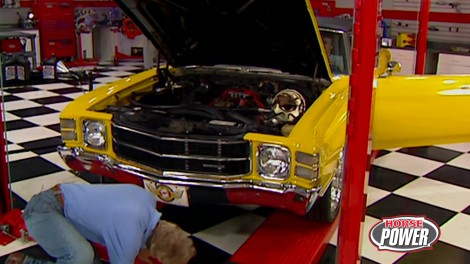
Automatic Shift Upgrade
We enhance the performance of a '71 Chevelle's automatic transmission with a shift improver kit and a whole shot converter, aiming for firmer shifts and quicker launches.
Season 7
Episode 4
Hosts: Joe Elmore, Chuck Hanson
First Air Date: September 28, 2022
Duration: 20 minutes 41 seconds




























